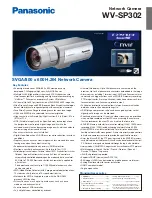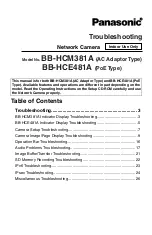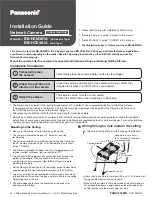
Secure Networks Policy Support
1-4 Introduction
Secure Networks Policy Support
Policy
Enabled
Networking
manages
the
allocation
of
networking
infrastructure
resources
in
a
secure
and
effective
manner.
Using
Secure
Networks
Policy,
an
IT
Administrator
can
predictably
assign
appropriate
resources
to
the
Users,
Applications,
and
Services
that
use
the
network;
while
blocking
or
containing
access
for
inappropriate
or
potentially
dangerous
network
traffic.
Using
this
technology
it
is
possible,
for
the
first
time,
to
align
IT
services
with
the
needs
of
specific
users
and
applications,
and
to
leverage
the
network
as
a
key
component
of
the
organization’s
security
strategy.
The
Secure
Networks
Policy
Architecture
consists
of
3
components:
Classification
Rules,
Network
Services,
and
Behavioral
Profiles.
These
are
defined
as
follows:
•
Classification
Rules
determine
how
specific
traffic
flows
(identified
by
Layer
2,
Layer
3,
and
Layer
4
information
in
the
data
packet)
are
treated
by
each
Switch
or
Router.
In
general,
Classification
Rules
are
applied
to
the
networking
infrastructure
at
the
network
edge/ingress
point.
•
Network
Services
are
logical
groups
of
Classification
Rules
that
identify
specific
networked
applications
or
services.
Users
may
be
permitted
or
denied
access
to
these
services
based
on
their
role
within
the
organization.
Priority
and
bandwidth
rate
limiting
may
also
be
controlled
using
Network
Services.
•
Behavioral
Profiles
(or
roles)
are
used
to
assign
Network
Services
to
groups
of
users
who
share
common
needs–for
example
Executive
Managers,
Human
Resources
Personnel,
or
Guest
Users.
Access,
resources,
and
security
restrictions
are
applied
as
appropriate
to
each
Behavioral
Profile.
A
variety
of
authentication
methods
including
802.1X,
EAP
‐
TLS,
EAP
‐
TTLS,
and
PEAP
may
be
used
to
classify
and
authorize
each
individual
user;
and
the
IT
Administrator
may
also
define
a
Behavioral
Profile
to
apply
in
the
absence
of
an
authentication
framework.
Standards Compatibility
The
DFE
‐
Diamond
modules
are
fully
compliant
with
the
IEEE
802.3
‐
2002,
802.3ae
‐
2002,
802.1D
‐
1998,
and
802.1Q
‐
1998
standards.
The
DFE
‐
Diamond
module
provides
IEEE
802.1D
‐
1998
Spanning
Tree
Algorithm
(STA)
support
to
enhance
the
overall
reliability
of
the
network
and
protect
against
“loop”
conditions.
LANVIEW Diagnostic LEDs
LANVIEW
diagnostic
LEDs
serve
as
an
important
troubleshooting
aid
by
providing
an
easy
way
to
observe
the
status
of
individual
ports
and
overall
network
operations.
Summary of Contents for Enterasys Diamond Distributed Forwarding Engine 7KR4297-02
Page 2: ......
Page 42: ...Completing the Installation 3 20 Installation ...
Page 50: ...Overview of DFE Diamond Module Shutdown Procedure 4 8 Troubleshooting ...
Page 64: ...Index 2 ...
















































